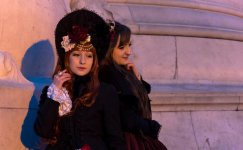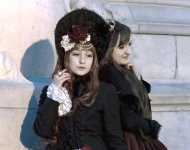Dear all,
I recently purchased a Nikon D610 with a Tamron 24-70 f2.8. I went out to London for a low light night test. I basicallz moved from MILC camera for the fullframe's low light capability and I noticed that the camera missbehave in changing light conditions.
I used the following setting:
- Aperture priority mode
- Manual ISO
- I let the camera to choose the shutter speed
- Matrix metering
I found that if a car approaches towards me is makes my picture super-underexposed... I think it is because I use matrix metering. However with my previous Sony NEX a car did not make such a dramatic change on my pictures. It looks like if the camera averages the light (calculating the complete spectrum that needs to be covered) and then set the exposure to cover the middle of the spectrum with the available dynamic range... It is quite stupid since the camera should be set to capture as much details as possible even if there are some very bright things in the picture... ( if shadow details are dominating in the picture...)
I would be glad if some of you could recommend some techniques that improve my photography in such environment.
-----------------------------
I have some thoughts how to solve, but I am not sure.:
-I will try to use center weighted metering. In this case the exposure will stay more constant, however I do not think it is the final solution for the problem. I might experience a huge exposure variation in this case..
-I believe that I have to use full manual for such an environment. Once I set the ISO,Aperture, shutter speed to the lights I will stay constant, and the shooting experience will brings how to re-adjust these options for a new photo with slightly changed lightning-condition. I have to try it, but the next occasion for it is in one week time Hope I will get an answer for my issue..
Hope I will get an answer for my issue..
Please, correct me if I am wrong.
Thank you very much, I enjoy being a new member of the Nikonites forum!
Bence
I recently purchased a Nikon D610 with a Tamron 24-70 f2.8. I went out to London for a low light night test. I basicallz moved from MILC camera for the fullframe's low light capability and I noticed that the camera missbehave in changing light conditions.
I used the following setting:
- Aperture priority mode
- Manual ISO
- I let the camera to choose the shutter speed
- Matrix metering
I found that if a car approaches towards me is makes my picture super-underexposed... I think it is because I use matrix metering. However with my previous Sony NEX a car did not make such a dramatic change on my pictures. It looks like if the camera averages the light (calculating the complete spectrum that needs to be covered) and then set the exposure to cover the middle of the spectrum with the available dynamic range... It is quite stupid since the camera should be set to capture as much details as possible even if there are some very bright things in the picture... ( if shadow details are dominating in the picture...)
I would be glad if some of you could recommend some techniques that improve my photography in such environment.
-----------------------------
I have some thoughts how to solve, but I am not sure.:
-I will try to use center weighted metering. In this case the exposure will stay more constant, however I do not think it is the final solution for the problem. I might experience a huge exposure variation in this case..
-I believe that I have to use full manual for such an environment. Once I set the ISO,Aperture, shutter speed to the lights I will stay constant, and the shooting experience will brings how to re-adjust these options for a new photo with slightly changed lightning-condition. I have to try it, but the next occasion for it is in one week time
Please, correct me if I am wrong.
Thank you very much, I enjoy being a new member of the Nikonites forum!
Bence


